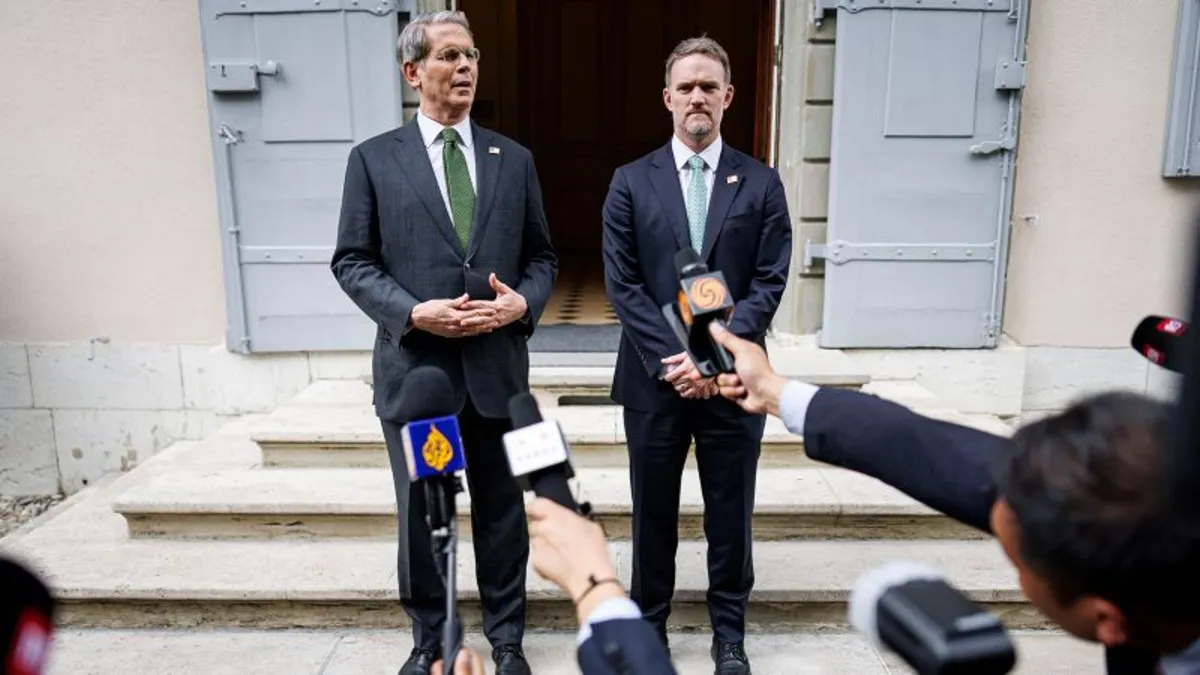
The United States and China are poised to unveil significant details regarding their recent marathon trade negotiations held over the weekend in Geneva, Switzerland. Following the talks, which involved key officials from the world’s two largest economies, Washington emphasized progress towards a potential trade deal, while Beijing highlighted a mutual agreement to initiate a formal economic and trade negotiation process.
During a press conference, the Chinese delegation announced plans to finalize the specifics of a “consultation mechanism” promptly, with a joint statement expected to be released on Monday. This optimism comes as global investors express relief over a thaw in the trade war that erupted due to President Donald Trump’s extensive tariffs. These tariffs have significantly disrupted global markets, supply chains, and raised fears of a recession.
The positive news from the Geneva talks has spurred a surge in global markets. On Sunday night, Dow futures rose approximately 1%, while S&P 500 futures increased by 1.3%, and the tech-heavy Nasdaq Composite futures climbed 1.7%. Asian markets also opened higher on Monday, reflecting investor optimism.
US Treasury Secretary Scott Bessent and US Trade Representative Jamieson Greer provided a brief overview of the negotiations, expressing their satisfaction with the progress made. Bessent noted, “I’m happy to report that we’ve made substantial progress between the United States and China in the very important trade talks,” while speaking at the residence of the Swiss representative to the United Nations in Geneva.
Greer pointed out the significant $1.2 trillion trade deficit, labeling it a “national emergency” that necessitated the imposition of tariffs. He expressed confidence that the agreement reached with Chinese partners would aid in addressing this critical issue.
Chinese Vice Premier He Lifeng, who led the Chinese delegation, maintained a positive tone during the press conference, although he refrained from discussing any specific agreements. He described the negotiations as “candid, in-depth, and constructive,” highlighting that important consensus had been achieved and substantial progress made. He emphasized the need for both sides to adopt a practical approach to resolving differences to expand the “cake of cooperation” and inject more certainty into the global economy.
A successful trade deal with China would be a significant boon for the global economy, offering clarity for consumers and American businesses that are currently facing the potential for recession due to rising prices. After the initial day of talks, President Trump remarked on Truth Social that a “total reset” had been negotiated in a constructive manner.
The trade conflict between the United States and China has historically involved tit-for-tat tariff increases. Trump initially imposed a 34% tariff on Chinese goods, which escalated to 145% shortly thereafter, prompting China to retaliate with a 125% tariff on US products. It remains uncertain whether the recent talks in Geneva have led to any firm agreements on reducing tariffs from either side.
On Sunday, the White House released a statement highlighting a “trade deal” following the talks, but it lacked specifics beyond the comments made by Bessent and Greer. In contrast, the Chinese side provided more insights into the negotiation process. Trade Representative Li Chenggang announced that Vice Premier He would lead the China-US trade and economic affairs, co-leading the mechanism with US representatives. He also indicated that both sides would engage in regular communications regarding trade and economic issues.
When asked about the timing of the upcoming joint statement, Li alluded to a Chinese proverb, stating, “if the dishes are delicious, then timing is not a matter,” suggesting that regardless of when it is released, the statement would be significant news for the world.
The ongoing trade war has already had profound effects on both the US and Chinese economies. Reports have emerged that no cargo vessels departed China bound for major West Coast ports over a 12-hour period, a situation not seen since the onset of the Covid-19 pandemic. Should any changes to US tariff rates on China occur, they are unlikely to drop below the existing 10% baseline rate applicable to other countries.
Even the recent trade deal with the UK, announced by Trump, maintained a 10% tariff rate, albeit with certain exemptions for British products such as cars, planes, steel, aluminum, and beef. Economists suggest that a tariff reduction threshold of 50% is essential for restoring normal business relations between the US and China.